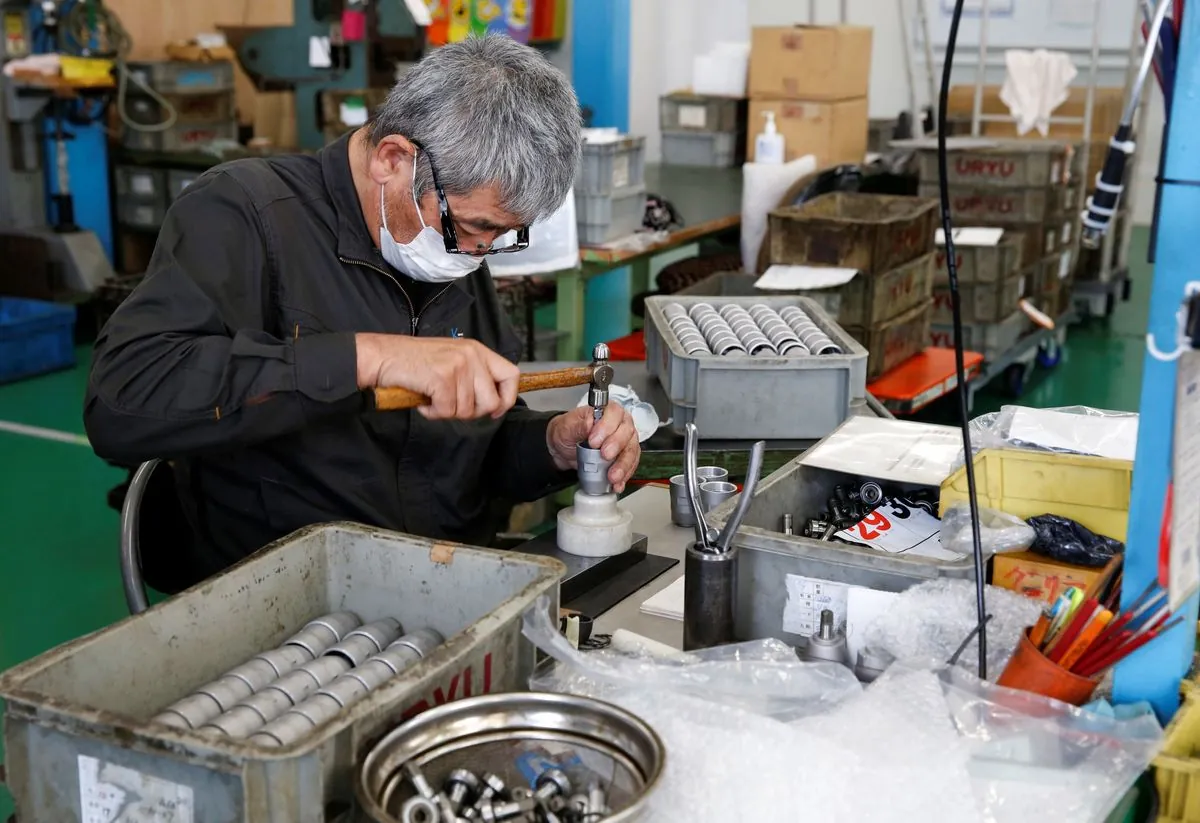Japan's manufacturing sector continued to face challenges in September 2023, as revealed by the latest au Jibun Bank Japan manufacturing purchasing managers' index (PMI). The index slightly decreased to 49.7 from 49.8 in August, marking the third consecutive month below the 50.0 threshold that separates growth from contraction.
As the world's third-largest economy by nominal GDP, Japan relies heavily on its manufacturing sector, which accounts for approximately 20% of the country's economic output. The recent data highlights the ongoing struggles faced by this crucial industry amid global economic uncertainties.
The survey indicated subdued trends across the manufacturing landscape, with output and new orders experiencing contraction. Firms attributed this weakness to a stagnant economy, inventory adjustments, and labor shortages. These factors have contributed to a decline in new orders since June 2023, reflecting broader economic challenges.
Export-oriented businesses have been particularly affected, with new export orders declining consistently since March 2022. This prolonged downturn underscores Japan's vulnerability to global economic fluctuations, given its position as a major exporter of electronics, vehicles, and machinery.
Despite these headwinds, employment in the manufacturing sector showed resilience, marking its seventh consecutive month of growth in September. However, the pace of job creation was the slowest in this streak, potentially signaling caution among employers.
Inflationary pressures continued to impact manufacturers, with higher costs for raw materials, labor, and logistics. Although inflation hit a five-month low, companies partially passed these increased expenses to clients by raising output charges, albeit at the slowest rate since June 2021.
"The survey showed muted trends across the manufacturing industry."
Looking ahead, manufacturers maintain an optimistic outlook for production, anticipating success in new product launches and potential demand recovery. However, confidence levels were at their lowest since December 2022, reflecting ongoing uncertainties in the global economic landscape.
Japan's economic challenges extend beyond the manufacturing sector. The country has been grappling with deflation for decades and faces the pressures of an aging population on its workforce and economy. These structural issues, combined with a high debt-to-GDP ratio, present significant hurdles for policymakers.
In response to these challenges, Japan has implemented various strategies, including the "Abenomics" policy aimed at stimulating economic growth and the promotion of "Society 5.0" for technological innovation. The country is also working to increase women's participation in the workforce and negotiating free trade agreements to boost its economy.
As a leader in robotics and automation, Japan's manufacturing sector may find opportunities for innovation and efficiency improvements. Additionally, the country's "Cool Japan" strategy, which aims to promote cultural exports, could provide alternative avenues for economic growth beyond traditional manufacturing.
The recent data, including August's factory output decline due to typhoon-led disruptions and weak U.S. sales, underscores the need for Japan to adapt to changing global economic conditions and leverage its strengths in high-tech industries and cultural exports to navigate the challenges ahead.
